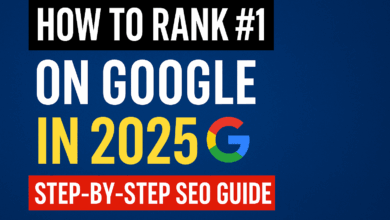SEO Best Practices for Car Dealerships: Boost Your Online Visibility

SEO Best Practices for Car Dealerships: Boost Your Online Visibility 555
In the competitive world of automotive sales, having a strong online presence is essential for attracting potential customers and driving sales. Implementing effective SEO strategies can significantly enhance your car dealership’s visibility on search engines and connect you with more local buyers. Below, we outline key SEO practices specifically tailored for car dealerships.
1. Targeted Keyword Research
Conducting comprehensive keyword research is crucial for attracting the right audience to your dealership. Focus on:
- Local Search Terms: Prioritize keywords that include your city or region, such as “best car dealership in [City]” or “used cars in [City].” This helps in attracting local customers who are searching for dealerships in their vicinity. For more on local SEO, see this guide.
- Long-Tail Keywords: Optimize for specific searches like “affordable SUVs in [City]” or “reliable used sedans in [City].” These terms often attract buyers who are further down the buying funnel. Check out this article for more tips on effective keyword use.
- Make and Model Keywords: Include specific car makes and models in your content, such as “2024 Toyota Camry for sale in [City].” This ensures that users searching for particular vehicles find your dealership’s offerings. See this resource for understanding the impact of specific keywords.
2. Optimized On-Page SEO
Enhancing on-page elements ensures that your website is search engine friendly. Key areas to focus on include:
- Title Tags & Meta Descriptions: Craft compelling titles and descriptions that feature your main keywords. Example: “Top-Rated Car Dealership in [City] | [Your Dealership Name].” For more on optimizing titles, refer to this guide.
- Header Tags: Use H1 tags for primary keywords and H2/H3 tags for supporting topics. This helps search engines understand the hierarchy and relevance of your content. See this article for more on effective header tag use.
- Image Optimization: Include relevant keywords in your image alt text, such as “2024 Red Honda Civic for sale in [City].” This improves visibility in image search results and enhances user experience. Learn more about image optimization in this post.
- Content Quality: Provide detailed descriptions for each vehicle, highlighting features, specifications, and benefits. Incorporate location-based content to capture local traffic. For content creation tips, see this article.
3. Local SEO Enhancements
Local SEO is essential for driving traffic to your dealership. Implement these strategies:
- Google My Business (GMB) Optimization: Fully optimize your GMB profile with accurate business information, high-quality photos, and up-to-date customer reviews. For more on GMB, check out this guide.
- Consistency Across Listings: Ensure your Name, Address, and Phone number (NAP) are consistent across all online directories. This consistency helps build credibility and improve local search rankings. Learn more about NAP consistency in this post.
- Local Directory Listings: Get your dealership listed on local and automotive-specific directories like Cars.com and Autotrader. This increases your dealership’s visibility and authority. For additional directory tips, refer to this article.
- Local Content Creation: Develop blog posts and pages that focus on local events, news, and community involvement to attract nearby customers. For insights on local content, see this guide.
4. Technical SEO Optimization
Technical SEO helps search engines effectively crawl and index your website. Focus on these areas:
- Mobile Optimization: Car Dealerships should Ensure your website is mobile-responsive, as many users search for dealerships on mobile devices. For more on mobile optimization, refer to this article.
- Page Speed: Optimize site speed by compressing images, leveraging browser caching, and utilizing a Content Delivery Network (CDN). Faster sites provide a better user experience and can boost your rankings. See this post for tips on improving page speed.
- Schema Markup: Implement structured data specific to the automotive industry, like Car, Offer, and Review schemas, to improve search engine understanding. Learn more about schema markup in this guide.
- SSL Certificate: Ensure your website is secure by using HTTPS, which also enhances your search rankings. For details on SSL certificates, refer to this article.
5. Content Marketing Strategy
Creating valuable content helps establish your dealership as an authority and attracts more visitors. Consider these tactics:
- Informative Blog Posts: Write articles on topics like car maintenance tips, vehicle comparisons, and financing options to engage potential buyers. For more on content creation, check out this guide.
- Engaging Video Content: Produce videos showcasing new arrivals, virtual test drives, and customer testimonials to appeal to a broader audience. See this article for tips on creating engaging video content.
- FAQs: Develop a comprehensive FAQ section addressing common questions about buying, financing, and maintaining vehicles. For more on FAQs, refer to this post.
Explore more about content marketing at Content Marketing Institute’s Overview.
6. Building Quality Backlinks
Quality backlinks are essential for improving your website’s authority and search rankings. Strategies include:
- Local Backlinks: Acquire links from local businesses, news outlets, and automotive-related websites. These links help build local authority and improve search engine rankings. For additional strategies on building backlinks, see 7 Reasons to Buy Land for Sale in Arkansas.
- Guest Blogging: Contribute guest posts to automotive blogs to build authority and earn valuable backlinks. Guest blogging exposes your dealership to new audiences. Check out 7 Steps to Becoming a Dynamite Real Estate Agent for tips on guest blogging.
- Sponsorships and Partnerships: Car Dealerships Collaborate with local events or charities to gain backlinks and increase brand visibility. Such partnerships can enhance your community presence and drive traffic. For more on local partnerships, see Breaking the Silence: Teen Stories Overcoming Bullying.

7. Managing Online Reviews
Positive online reviews play a critical role in attracting new customers. Here’s how to manage them:
- Encourage Customer Reviews: Ask satisfied customers to leave positive reviews on platforms like Google, Yelp, and industry-specific sites. Good reviews can boost your dealership’s reputation and search engine visibility.
- Engage with Feedback: Respond promptly to both positive and negative reviews to show you value customer feedback. Engaging with reviews can improve customer relations and build trust. For more tips on managing feedback, see Redefining Success: Career Paths for a Modern Teenager.
8. Social Media Integration
Leverage social media to connect with potential buyers and promote your inventory. Effective strategies include:
- Regular Content Sharing: Car Dealerships Post blog updates, new vehicle listings, and special promotions on platforms like Facebook, Instagram, and Twitter. Regular updates keep your audience engaged and informed. For ideas on content sharing, visit Today’s Adolescents: Apps That Are Changing Their Lives.
- Audience Engagement: Respond to comments and messages quickly to build a loyal following. Active engagement helps foster a community around your dealership.
- Hashtag Use: Incorporate relevant hashtags, including those specific to your location, to increase your posts’ reach. Hashtags can help your content get discovered by a larger audience. For more on effective hashtag strategies, see Social Media Platforms: Connecting the World.
9. Analytics and Tracking
Monitoring your website’s performance is key to refining your SEO strategy. Use these tools:
- Google Analytics: Track traffic sources, user behavior, and conversion rates to identify areas for improvement. Google Analytics provides valuable insights into your website’s performance. Learn more about analytics and tracking at Google Analytics.
- Google Search Console: Monitor keyword rankings, detect technical issues, and measure website performance. This tool helps identify and resolve issues that might affect your search rankings. Access Google Search Console at Google Search Console.
- Call Tracking: Implement call tracking to evaluate the effectiveness of SEO campaigns in generating phone leads. Call tracking can help assess the ROI of your SEO efforts.
10. Continuous SEO Improvement
SEO is an ongoing process. Keep your strategy effective by:
- Staying Updated: Keep abreast of the latest SEO trends and Google algorithm updates. Search engine algorithms are constantly evolving, and staying informed helps maintain your rankings. For ongoing SEO education, check out 10 Steps to a Successful Redevelopment Project.
- Regular Audits: Perform frequent SEO audits to identify and fix any issues promptly. Regular audits help ensure that your SEO strategy remains effective.
- Refreshing Content: Update old content with new insights and optimize it according to current SEO best practices. Fresh content can improve user engagement and search visibility. For more on content updates, see How to Look Younger.


